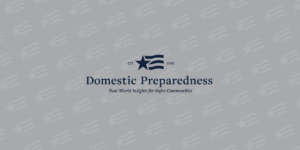

Do Not Stop Exercising – Go Remote!
Andrew (Andy) Altizer and James Westbrook
July 29, 2020
An important aspect of emergency preparedness is a robust exercise program designed with the vital
purpose of identifying gaps, updating plans, and strengthening emergency response. Exercises bring
together key stakeholders to help build collaborative relationships that pay huge dividends when the
real emergency arises. Simply understanding other agency protocols and operational capabilities are
valuable lessons learned from most exercises. However, exercises go beyond the checklists, plans, and
policies. They offer the opportunity to get to know other people and solidify teams.

Staying Prepared in a Changing World
Catherine L. Feinman
July 29, 2020
Many professions are steeped in tradition, including those in emergency preparedness and response
organizations. In these well-established environments, when asked to make a change to traditional
practices, the response is sometimes simply, “No, this is how we’ve always done it.” Such thinking can
leave communities underprepared for new, emerging, or evolving threats. What worked well 5, 10, or 20
years ago may have lost its effectiveness as times and conditions have changed or there may simply be
more options available that have not been considered because of tradition.

The Epitome of Failure – Part 3
William H. Austin
July 22, 2020
At the beginning of a 28 May 2020 court hearing, U.S. District Court Judge William Alsup made the following opening statement, “If there ever was a corporation that deserved to go to prison, it is PG&E for the number of people it has killed in California.” Pacific Gas and Electric’s (PG&E) survival for the last decade has been described in some detail in Parts 1 and 2 of this three-part article. The vox populi of the courts, regulators, fellow utilities, businesses, and customers has most of the time fallen on deaf ears with the leadership of PG&E. The facts that create this type of environment are extremely complicated.

A New Way of Looking at Earthquake Plans
Frances Dunniway
July 15, 2020
With the inevitability of earthquakes in California, disaster preparedness and evacuation focused
on the safety of lives is of utmost importance. The health, welfare, and safety of children are of
paramount importance, as children are left in the protection of school district officials. In 2005,
California Legislature passed Assembly Bill 103 requiring that each school district have a safety
disaster plan in place and charged the U.S. Department of Education to coordinate with Office of
Emergency Preparedness to keep these materials current and updated (AB 103, Section 1).

EMS Continuity of Operations Plan: A Critical Lifeline Component
Ron Cain
July 8, 2020
“A lifeline enables the continuous operation of critical government and business functions and is essential to human health and safety or economic security.” The Federal Emergency Management Agency (FEMA) developed the Community Lifelines construct after the 2017 and 2018 hurricane seasons. The framework of Community Lifelines allows the whole community to assess the status of and impact to each of the seven lifelines so that the optimal and correct essential action can be executed to support those lifelines not operating at full capacity during a disaster or emergency event.

